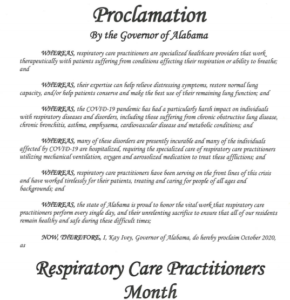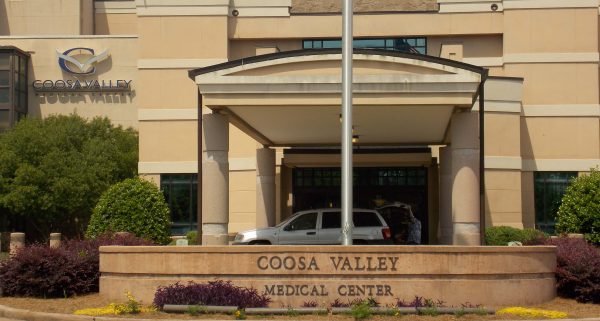SYLACAUGA, Ala. – When the COVID-19 pandemic hit the United States, hospitals across the nation were nervous. How would hospitals be able to treat a high volume of patients while virus experts were still attempting to determine how the virus could be treated?
The best way, for Coosa Valley Medical Center, was with the healthcare industry’s best technology.
Carolyn Greger leads the charge in the respiratory unit of of Coosa Valley Medical Center. Greger’s 40-plus years of experience make her one of the most knowledgeable in her field, not only at CVMC, but also in the state. Chief Nursing Officer and Chief Operating Officer Amy Price described Greger as one of leaders across the industry.
“Carolyn Greger leads the Respiratory Therapy department at CVMC. Carolyn has been with CVMC for almost 40 years, and leads not only our RT efforts but our lab efforts as well. Carolyn is involved with the Jeff State and JSU Respiratory programs,” said Price. S”he brings RT students to our campus and our RT team plays an active role in training them. Carolyn and her team play a critical role in supporting our patients every day and especially during this pandemic.”
“The job of a respiratory therapist is to get the patient well with whatever condition they have while offering the best quality of care,” Greger explained. “We do that at Coosa Valley Medical Center.”
In the last eight months, respiratory care has looked much different. Greger was one of many respiratory therapists apprehensive as the pandemic crept into the US, but she was probably more prepared. Coosa Valley Medical Center worked hard to ensure it had what it needed to meet the need of every patient. Even better, a respiratory patient never had to leave CVMC to get the treatment they needed.
High-flow oxygen units were recommended for COVID-19 patients, CVMC quickly acquired many to treat patients. High-flow units are exactly what the name details. High-flow units deliver a high dosage of oxygen to patients via nasal cannula – the two small tubes inserted into the nose. This is where quality of care for patients comes into play. High-flow oxygen units with nasal cannula means one thing, no oxygen mask, which is traditionally a requirement for high-flow. Mask-free delivery improves patient comfort and simplifies nursing care. Patients that require a high-flow unit are normally alert and breathing on their own, but have problems keeping their oxygen at a recommended level. A patient could also be dealing with respiratory distress, the number one issue with COVID-19 patients.
“These high-flow units have been able to help us a lot with respiratory distress patients,” said Greger. “They allowed us to treat patients without intubating, and becoming invasive with the ventilators. We have been able to get patients well, turn them around, and get their oxygen level where it needs to be without them ever having to be intubated and put on a ventilator.
CVMC was also prepared for the worst, patients with much greater problems than respiratory distress that may need a ventilator. New ventilators were purchased. The neat aspect for these ventilators is that they are made for patients of all ages. These ventilators cover newborns to adults, and feature state-of-the-art graphics displays and monitors. The monitors are big enough to be seen from the doorways of a patient’s room, allowing for more better care.
Steps were also taken in monitoring care. If a patient was in the hospital, brand new blood gas analyzers could be used to monitor how much oxygen is in the blood. This is paramount in deciding how to treat a respiratory patient dealing with any respiratory issue. Blood gas analyzers check to see if the body is getting rid of carbon dioxide as it should and getting the needed oxygen to function correctly.
“The acquisition of this technology and equipment allows us to better support our physicians in the diagnosis and treatment of a multitude of diseases,” Price remarked. “This is another example of how CVMC lives out our mission of enhancing the health and wholeness of each individual we serve.”
Simply put, Coosa Valley Medical Center is offering quality care close to home that residents of Sylacauga and the surrounding areas can, and should, take advantage of.
Across the state, and locally, respiratory therapists have put in countless hours to control the pandemic, and save lives, For their efforts, Gov. Kay Ivey proclaimed October Respiratory Practitioner Month. This week is also Respiratory Care Week.







